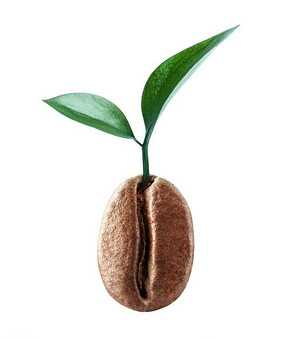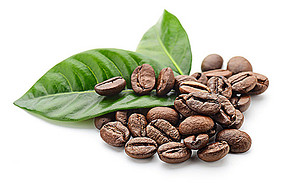Ethiopia: Arabica's genetic Treasure House
Follow the caf é (Wechat official account vdailycom) and found that Beautiful Cafe opened a small shop of its own.
The Federal Democratic Republic of Ethiopia (English: The Federal Democratic Republic of Ethiopia), abbreviated as "Ethiopia" or "Ethiopia", is a country located in northeast Africa. It is bordered by Djibouti and Somalia to the east, Sudan and South Sudan to the west, Kenya to the south and Eritrea to the north. The plateau accounts for 2% of the total area of the country, with an average elevation of nearly 3000 meters. It is known as the "roof of Africa", and the capital is Addis Ababa.
Ethiopia is a member of the African Union and one of the least developed countries in the world, with an economy dominated by agriculture and animal husbandry and a weak industrial base. The headquarters of the African Union is located in its capital.
Ethiopia is the largest producer of Arabica in Africa. More than 2,000 varieties under Arabica are derived from Ethiopia's oldest variety of Tibica, which was transplanted to Central and South America or Asia. Ethiopia is a genetic treasure trove of Arabica, and it is estimated that there are at least 2000 varieties, while less than 5% of the varieties belonging to Arabica in Xuancheng, the Ethiopian authorities, have been deeply studied and confirmed in their morphology and habits.

First, the unique grading system and bean phase
Ethiopian coffee beans are divided into five grades, the first stage (Grade 1) and the second stage (Grade 2) reserved for water washing. Grade1 represents 3 defective beans per 300g raw beans, and Grade 2 represents 4 defective beans per 300g raw beans. The quality of sun-cured beans was Grade 3, Grade 4 and Grade 5 in turn. In recent years, some farms have launched Grade 1 sun-dried beans, which can be regarded as the best.
Ethiopia's beans are easily recognizable. Most of the beans are small and pointed long beans, the so-called "longberry", and are often mixed with small oval-shaped short beans, the so-called "shortberry". The beans look uneven. (the picture above is Starbucks selection: the bean appearance of Kayong Mountain in Ethiopia. If you are interested, you can read the relevant information in the selected coffee at the bottom of the official account). Although Essel has uneven beans, its citrus aroma is among the highest in the world. Whether espresso or hand-brewed, you can smell the pungent aromas of orange or lemon during extraction. The biggest disadvantage is that the beans are uneven and easy to bake unevenly, especially the sun-dried beans, which fluctuate greatly every year.
Two and four major cultivation systems
Ethiopia is located between 3 and 14 degrees north latitude, with coffee trees covering an area of nearly 600000 hectares. There are two rainy seasons a year in the south and east, while there is only a single rainy season in the west. Its rich and diverse coffee cultivation system is second to none in the world. There are four major coffee systems: (1) forest coffee (Forest Coffee); (2) semi-forest coffee (Semi-Forese Coffee); (3) pastoral coffee (Garden Coffee); and (4) farm coffee (Plantation Coffee). 95% of Ethiopian coffee is grown organically without fertilizer or medicine, but all of it has not yet been internationally certified.
1. Forest Coffee:
Refers to wild coffee, which accounts for 10% of Ethiopia's production and is distributed in the wild coffee forest areas of the west and southwest, namely the Kafa forest. "Kaffa" is an ancient word. According to the ancient Ethiopian Gaelic language, the coffee tree is pronounced "Kafa"-"ka" means God, and "afa" represents the earth or the plants of the earth, so the combined "kaffa" means "land of God" or "tree of God". The Kafa Forest is the birthplace of Arabica and it is estimated that there are at least 2000 species.
two。 Half Forest Coffee:
Refers to semi-wild coffee, distributed in the western and southwestern Kafa forests, accounting for 35% of the production. In order to increase the yield, farmers choose a small piece of wild woodland, artificially trim the branches and leaves that are too dense, balance shade and sunlight, and weed once a year to increase yield.
3. Pastoral coffee:
It is the most popular way for farmers to plant coffee trees mixed with other crops in their own backyard or farmland. It is mainly distributed in Sidamo and the southeast in the south, accounting for 50% of the total output.
4. Farm Coffee:
This system adopts modern agronomic management, and seedling raising, pruning, fertilization, spraying and planting density are all stipulated. It is the only non-organic cultivation method at present, accounting for only 5% of the national annual output.
III. Nine major producing areas in Ethiopia
Ethiopia has five boutique coffee producing areas: Yirgacheffe, Sidamo, Harar, Limu, Lekempti or Gimbi, and four general commercial bean producing areas: Djimmah, Illubabor, Teppi and Bebeka.
1. Yega Xuefei:
Yega Xuefei is a small town, 1700-2100 meters above sea level, synonymous with Ethiopian boutique coffee. It has been a wetland since ancient times. The ancient saying "Yirga" means "settle down" and "Cheffe" means "wetland". The mode of production and flavor of coffee here is so outstanding that Ethiopian coffee farmers compete to be proud of the flavor of their coffee, making it the most famous coffee producing area in Africa. The so-called "Yega Chuefei" refers to the strong aroma of jasmine, as well as the sweet aroma of peaches, almonds and tea, that is, "flowers bloom at the entrance of coffee". Just like a flower touches the comfort of taste buds and olfactory cells in the nasal cavity.
two。 Sidamo:
1400-2200 meters above sea level, is a famous boutique coffee area in southern Ethiopia, bordering Kenya, there are two kinds of water washing and sun exposure. The washed Sidamo is light green, with citrus and raspberry aromas on the palate, as well as pleasant elegant sweet and sour flavours, grape sweetness and chocolate finish. Sun Sidamo yellowish green, in addition to citrus, but also a strong fruit aroma, which is related to coffee beans stored in the pulp to dry and ferment for two weeks.
3. Hara:
With an elevation of 1600 to 2400 meters above sea level, it is one of the highest elevation areas for human coffee cultivation, overlooking the Yemeni ports of Moka and Aden across the Gulf of Aden. Hara is a dry and cool climate, the most suitable for sun treatment, high-quality Hara has a strong sun fruit aroma, citrus sweet, blueberry sour, mango, clove, cinnamon, and even slightly leather and slightly earthy aroma, complex aroma, alcohol thickness is better than water-washed Yega Chevy, moderate sour, slightly chocolate finish, flavor characteristics similar to the Yemeni mocha across the bay, so Hara is also known as Hara Moka. Beans are mostly long-bodied beans.
4. Liam:
1200-1900 meters above sea level, and Jinma producing area both belong to the north of Kafa forest and the south of Jinma. Lim is mostly washed with water, with strong orange fragrance, lively sour aroma, good sweetness, slightly spicy flavor and balanced flavor.
5. Lekanti (Kinby):
1400-1800 meters above sea level, located in the northwest of Lim, mainly sun-dried beans, known as "the Hara of the poor", the flavor is similar to Hara, but affordable but not expensive. Its large bean body is very different from the southwestern and eastern producing areas, and it also has obvious flower fragrance. It is a common sun-dried bean in the American boutique coffee industry.
6. Jinma:
1400-1800 meters above sea level, specializing in commercial beans, the annual export volume of more than 60,000 to 80,000 tons, accounting for more than 1 of Ethiopia's output, is the largest producing area. Golden horses are sun beans, known as Ethiopian mochas, and their prices are much lower than those of Haramoka. Because its producing area is located in the Kafa forest with a wide variety of varieties, coffee quality and flavor are also changeable, good luck can buy good goods with good quality and low price.
7. Iru Gbagbo:
1300-1900 meters above sea level, located in the southwest of Lekanti, is the westernest producing area of Ethiopia, bordering Sudan. Its beans are moderately sour and mellow, so they are mostly used as formula beans and are often transported to Jinma for mixing treatment, which are not high-quality beans.
8: 9: Tiebi & Becca:
The iron ratio is 1000-1900 meters above sea level and 900-1200 meters above sea level in Bebeca. Located on the edge of the Kafa forest, these two areas are the lowest coffee-producing areas in Ethiopia, dominated by bulk commercial beans or formula beans.
Important Notice :
前街咖啡 FrontStreet Coffee has moved to new addredd:
FrontStreet Coffee Address: 315,Donghua East Road,GuangZhou
Tel:020 38364473
- Prev

What is the most expensive coffee in the world? Guixia Coffee
Pay attention to coffee reviews (Weixin Official Accounts vdailycom ) and find a good cafe to open your own shop. Do you know what the most expensive coffee in the world is? Today Doctor will give you a science popularization, it is the most expensive coffee in the world: Panama Emerald Estate's rose summer coffee (Geisha) seeds were discovered in Ethiopia's rose summer forest in 1931.
- Next

The grade of caffeine in Ethiopia
Following Cafe (official Wechat account vdailycom) found that Beautiful Cafe opened a small shop of its own background Ethiopia's coffee bean grading standards are supported by the American Professional Coffee Association. But remember, Ethiopia is a coffee producer, so why can't Ethiopia set its own standards?-in 2008, Ethiopia held a formal coffee trading center.
Related
- Detailed explanation of Jadeite planting Land in Panamanian Jadeite Manor introduction to the grading system of Jadeite competitive bidding, Red bid, Green bid and Rose Summer
- Story of Coffee planting in Brenka region of Costa Rica Stonehenge Manor anaerobic heavy honey treatment of flavor mouth
- What's on the barrel of Blue Mountain Coffee beans?
- Can American coffee also pull flowers? How to use hot American style to pull out a good-looking pattern?
- Can you make a cold extract with coffee beans? What is the right proportion for cold-extracted coffee formula?
- Indonesian PWN Gold Mandrine Coffee Origin Features Flavor How to Chong? Mandolin coffee is American.
- A brief introduction to the flavor characteristics of Brazilian yellow bourbon coffee beans
- What is the effect of different water quality on the flavor of cold-extracted coffee? What kind of water is best for brewing coffee?
- Why do you think of Rose Summer whenever you mention Panamanian coffee?
- Introduction to the characteristics of authentic blue mountain coffee bean producing areas? What is the CIB Coffee Authority in Jamaica?

